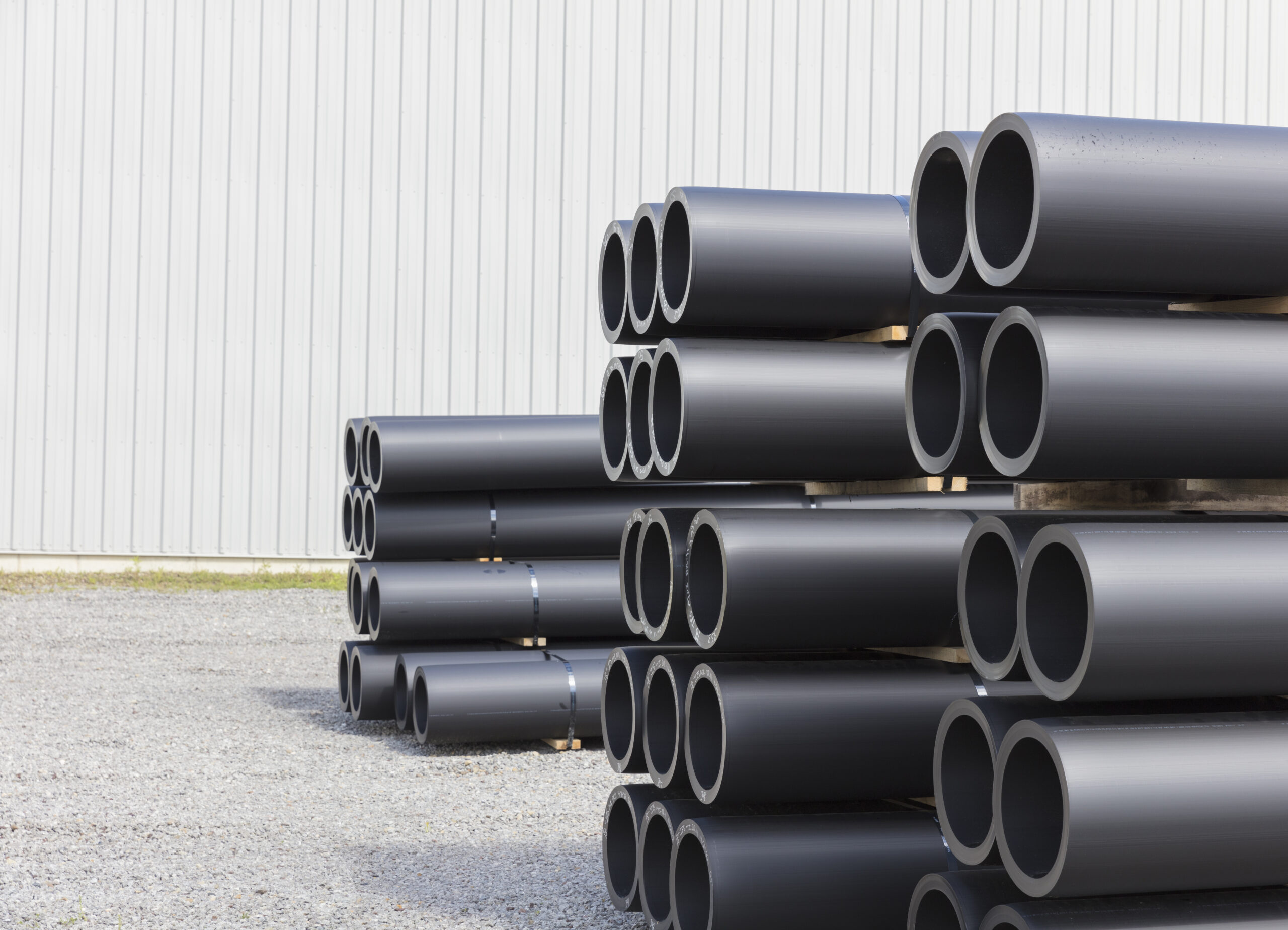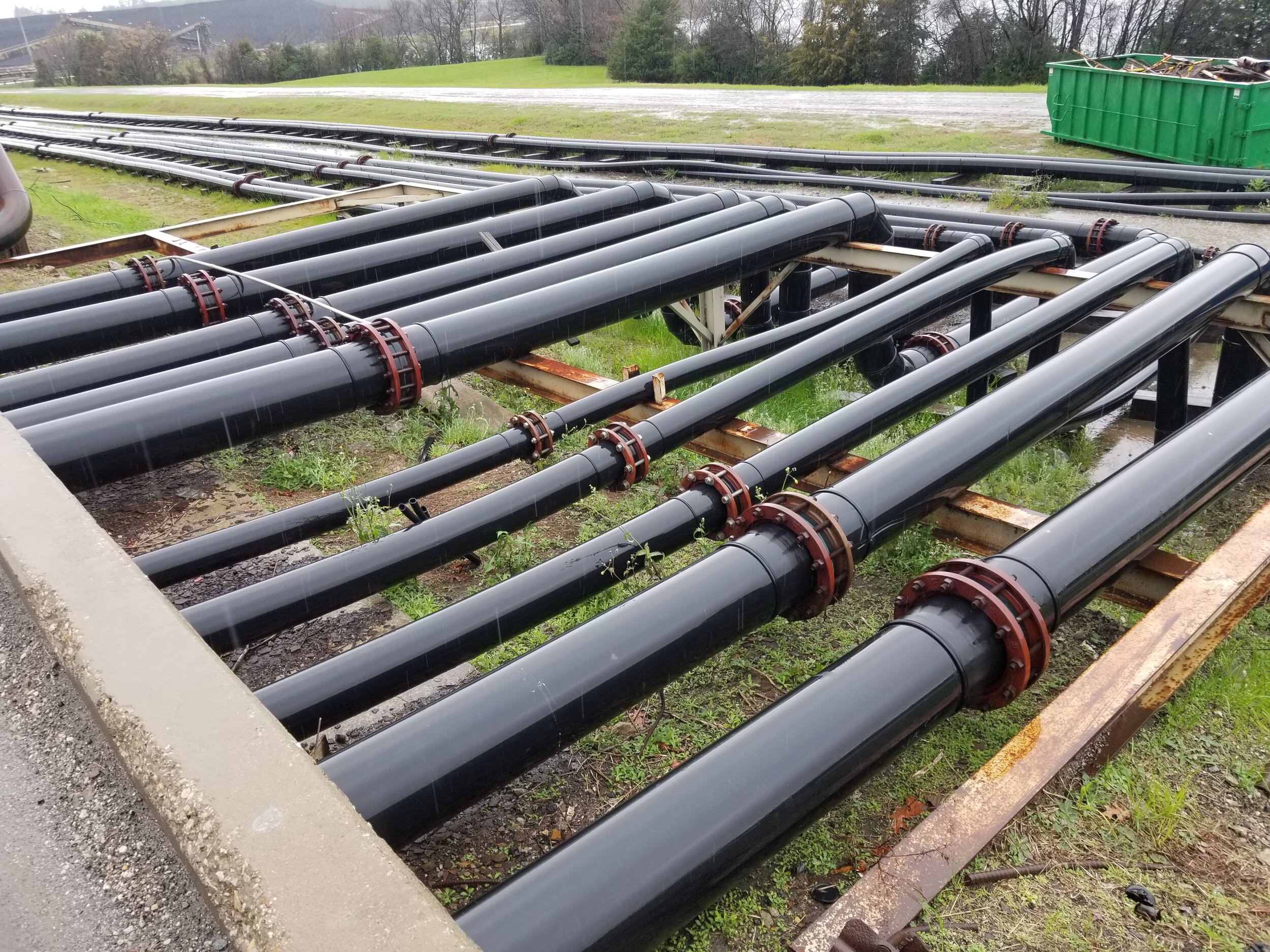The Crucial Steps for Effective Installation of HDPE Pipeline in Your Next Task
Successful setup of HDPE pipe requires careful planning and implementation. Key steps consist of examining project requirements, preparing the site, and picking proper joining strategies. Each stage plays an essential duty in making certain the honesty and performance of the pipe. Comprehending these vital steps can greatly affect the overall success of the project - hdpe pipe in stock Midland TX. The subtleties of each action may hold the trick to getting over usual challenges faced during setup.
Recognizing the Conveniences of HDPE Pipeline
High-density polyethylene (HDPE) pipe supplies numerous benefits that make it a recommended choice for numerous applications. Its high resistance to corrosion and chemicals warranties resilience in demanding environments, considerably extending the lifespan of installments. Furthermore, HDPE's adaptability enables less complicated setup, specifically in tough terrains, as it can bend without breaking. The light-weight nature of HDPE pipeline streamlines transportation and handling, lowering labor prices throughout installation.
HDPE pipeline is known for its low rubbing coefficient, which improves liquid circulation and lessens power usage. Its smooth building and construction lowers the threat of leakages, adding to far better resource monitoring and environmental management. In addition, HDPE is recyclable, straightening with lasting techniques and minimizing ecological effect. Overall, the combination of strength, versatility, and eco-friendliness makes HDPE pipe a premium selection for a large range of tasks, from water circulation to commercial applications.
Preparation Your HDPE Pipe Installation
When planning a setup of HDPE pipeline, mindful consideration of numerous crucial elements is crucial to safeguard an effective project. Initially, project managers should evaluate the certain requirements of the pipeline, consisting of the intended use, flow rates, and ecological conditions. Comprehending these parameters will direct the selection of suitable pipeline measurements and material quality.
Next, timelines must be developed, considering purchase routines and any potential hold-ups. Sychronisation with neighborhood authorities for permits and regulatory conformity is also necessary. In addition, a comprehensive budget plan needs to be prepared, incorporating all expenses connected with products, labor, and equipment.
Finally, it is very important to engage a certified team experienced in HDPE pipe installment. Their proficiency will help minimize risks, assurance adherence to market criteria, and inevitably contribute to the project's success. Detailed preparation lays the groundwork for a smooth setup process and resilient efficiency of the HDPE piping system.
Preparing the Website for Installment
Proper site prep work is crucial for the successful setup of HDPE pipeline. Before installment begins, the website needs to be thoroughly assessed to ensure it satisfies all needed demands. This includes evaluating the ground for existing structures, utilities, and possible dangers that might impede the installation process.

Right elevation and alignment need to be established to keep a constant slope for drainage functions. Correct drainage around the setup site is likewise vital to prevent water accumulation, which can cause complications down the line.
Strategies for Signing Up With HDPE Pipes
Accomplishing a dependable link between HDPE pipes is necessary for making certain the honesty and longevity of the installation. Various techniques exist for signing up with these pipes, each suited for various task requirements. Combination welding is among the most typical methods, making use of warm to bond the pipe finishes together, developing a seamless and durable link. This method can be further categorized right into outlet fusion and butt combination, relying on the pipe configurations.
Mechanical fittings are another choice, using clamps and threaded connectors to sign up with sections of HDPE pipe. While usually faster to set up, they might require additional maintenance with time. Electrofusion is a specialized method that includes making use of electrical present to warmth and fuse the pipes through particularly developed fittings, making sure a solid bond. Selecting the suitable signing up with technique is vital, as it straight impacts the general efficiency and dependability of the HDPE piping system in the desired application.
Evaluating and Examination of Installed Water Lines
The screening and inspection of mounted HDPE pipes are important to guaranteeing their functionality and durability. This procedure incorporates aesthetic inspection techniques, pressure screening approaches, and leakage discovery procedures to identify potential issues. By utilizing these techniques, specialists can verify the honesty of the installment prior to it is put into use.
Visual Assessment Techniques
Utilizing reliable visual evaluation methods is important for ensuring the stability of mounted HDPE pipes. Assessors need to methodically take a look at all noticeable sections of the pipe to identify any indicators of damages, imbalance, or incorrect installation. Trick indications to examine include joint integrity, surface abnormalities, and links. Inspectors may make use of tools such as multiplying glasses or video cameras to enhance presence and detail. It is important to inspect for indicators of ecological anxiety, such as twisting or too much bending, which could endanger performance. Regular paperwork of findings enables for tracking changes with time and helps overview required fixings. By adhering to established aesthetic inspection methods, project groups can notably lower the risk of future failings and guarantee long-lasting reliability of the piping system.
Pressure Examining Techniques
Aesthetic evaluation acts as a preliminary action, yet it is not sufficient by itself to assure the performance of set up HDPE pipelines. Pressure testing approaches are vital for guaranteeing the honesty of these systems. Typically, hydrostatic testing is used, where the pipes are filled up with water and based on stress levels above the designated operating stress. This method assists recognize weak points or potential leaks. Pneumatically-driven screening can also be utilized, although it brings higher risks due to the compressibility of air. No matter the approach chosen, adhering to sector standards and safety protocols is vital. After conducting pressure tests, complete paperwork is necessary to confirm the outcomes and validate that the installation satisfies all operational needs prior to proceeding to the following phase of the task.

Drip Discovery Treatments
Exactly how can one ensure that set up HDPE pipelines are devoid of leaks? Reliable leak discovery treatments are essential to protect the stability of the system. Originally, aesthetic inspections must be executed, looking for indications of water accumulation or soil erosion around pipe joints. Following this, stress screening can validate the system's strength. A typical method is the hydrostatic examination, where water is presented under pressure, checking for declines that show prospective leakages. Additionally, advanced technologies, such as acoustic sensors or infrared thermography, can spot leakages that might not show up. Regular tracking and upkeep further add to the longevity of HDPE pipes, ensuring they continue to be leak-free throughout their operational life-span. Proper documents of these procedures is essential for compliance and future recommendation.
Upkeep Tips for Long-Term Performance
To ensure the longevity of HDPE pipes, establishing a normal assessment routine is important. This proactive strategy allows for the early detection of potential issues, decreasing pricey repairs. In addition, applying correct cleaning methods will certainly assist keep peak efficiency and prevent accumulation that can influence capability.
Normal Assessment Schedule
Although HDPE pipes are recognized for their sturdiness and resistance to corrosion, establishing a regular examination routine is necessary for ensuring their long-lasting efficiency. Regular inspections assist recognize prospective concerns such as leaks, joint integrity, and environmental influences that may impact the pipeline's functionality. It is suggested that examinations happen a minimum of biannually, check here or more frequently in environments with severe problems. Midland TX HDPE Pipe Fittings in Stock. Throughout these evaluations, visual checks should be carried out to detect indications of wear or damages. In addition, making use of technology such as ultrasonic screening can provide additional understandings right into the pipe's condition. By applying a structured examination schedule, project managers can proactively resolve problems, thus prolonging the life expectancy of HDPE pipes and maintaining system performance
Proper Cleaning Techniques
Correct cleansing strategies play an essential duty in preserving the lasting performance of HDPE pipes. Regular cleansing stops the build-up of particles, debris, and biofilm, which can cause blockages and minimized flow performance. Operators ought to utilize approaches such as high-pressure water jetting or foam cleaning to effectively get rid of impurities without damaging the pipe surface. It is essential to prevent using severe chemicals that might degrade HDPE material. Additionally, set up upkeep checks must include aesthetic examinations for any type of signs of wear or damages. Properly educated workers should accomplish these cleansing procedures, ensuring compliance with security and ecological policies. By implementing these methods, the lifespan of HDPE pipelines can be significantly extended, ensuring excellent efficiency throughout their operational life.
Often Asked Concerns
What Are the Environmental Influences of HDPE Pipe Production?
The ecological effects of HDPE pipe manufacturing consist of greenhouse gas discharges, power intake during manufacturing, possible plastic pollution, and challenges in recycling. HDPE's longevity and resistance to corrosion can reduce some ecological issues.
Just How Does HDPE Pipeline Compare to Various Other Materials?

What Equipment Are Essential for HDPE Pipe Installation?
Essential tools for HDPE pipe installment consist of a combination machine, pipe cutters, shovels, determining tape, and safety and security equipment. Proper equipment guarantees reliable, safe handling and installation, adding to the job's total success and honesty.
Exist Any Kind Of Details Regulations for HDPE Pipeline Setup?
Specific policies for HDPE pipeline installation differ by region, typically regulated by local, state, or federal codes. Conformity with these laws assurances safety, environmental management, and capability, making adherence vital for successful job end results.
Can HDPE Piping Be Recycled After Usage?
Yes, HDPE pipelines can be reused after usage. Their polycarbonate nature permits reprocessing, making them appropriate for recycling right into new products. This sustainability facet adds to environmental conservation and promotes round economic climate techniques in building and construction.